Is Pyrex Microwave-Safe? (Composition & Handling Tips)
-

- Last updated:
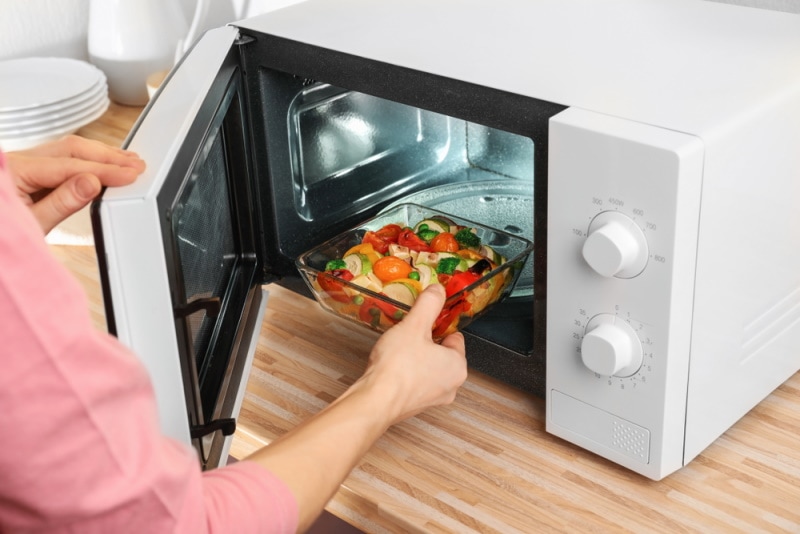
Pyrex is famous for its tradition of enduring quality, but we can’t treat it as invincible if we expect our favorite bakeware to last. Whether crashing to the floor or sitting on a hot stove, the heavy-duty glass can end up in plenty of damaging situations. And while Pyrex is microwave-safe and oven-safe, it isn’t always out of harm’s way simply because it’s in familiar territory.
Like most glass, Pyrex can tolerate time in the microwave without breaking down. But depending on how you treat it before and after heating, it’s also easy to shatter your most treasured dish unexpectedly. We’ll explain further with this look at whether Pyrex is microwave-safe and offer tips for keeping your glassware safe from damage.

Is Pyrex Microwave-Safe?
Pyrex is microwave-safe. Most commercial glass, including Pyrex, can withstand temperatures of 300–400°F, far above the temperatures you can expect from a typical microwave oven. Temperatures in microwaves generally reach the boiling point of water (212°F), as that is the heat source.
Microwaves don’t produce heat. The microwaves that bounce around the metal compartment agitate water molecules in food, causing them to vibrate aggressively and create heat energy. Your food gets hot not because of any radiant heat from an element but rather the conductive heat from the hot water inside it. Unless it is metal or contains water, microwaves won’t affect the material. Put a glass in the microwave, and it won’t heat much, if at all.
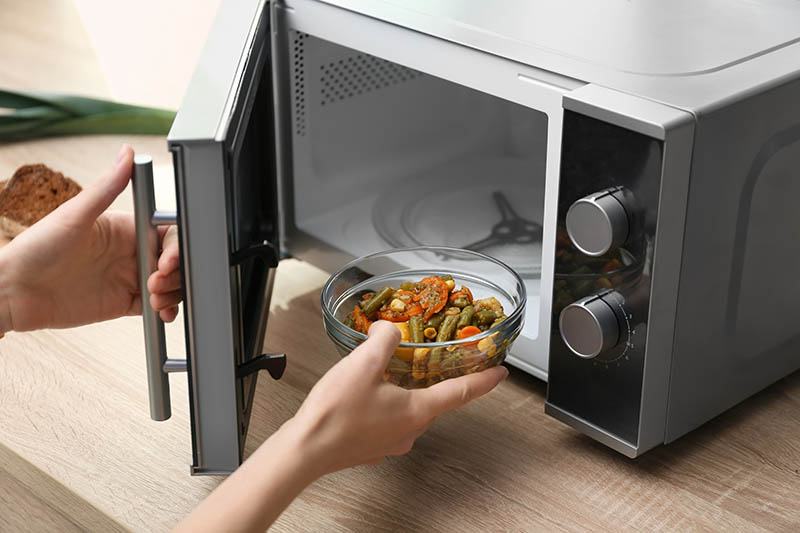
Gold and Silver-Rimmed Pyrex
If you have gold or silver-rimmed Pyrex pieces, you cannot heat them in the microwave. Though Pyrex glass is generally microwave-safe, any metal components may arc. Microwaves pass through glass, plastic, and many other materials but deflect off metals. They excite and move the electrons they encounter, and when charged particles accumulate, a spark erupts. While there are ways to shape metal to prevent arcing, you can’t manipulate the metal in Pyrex to reduce the risk.
Pyrex Construction and Thermal Expansion
It’s impossible to discuss Pyrex’s heat tolerance without discussing its construction. In the early 1900s, when Pyrex came into being, Corning Glass Works used borosilicate glass, a notable upgrade in durability over the more inexpensive and popular soda-lime glass.
The new material was stronger, harder, and more resistant to thermal shock and breakage than soda lime. It also had a lower solubility in water, preventing materials from leaching out of the glass. Borosilicate was suitable for more tasks and contexts, ranging from the lab to the kitchen.
Glass is easy to shatter under sudden temperature changes. It conducts heat poorly and has poor tensile strength. Take it from the freezer and put it in the microwave, and the sudden temperature change won’t occur evenly throughout. The heated side of the glass will warm while the other side stays cool.
Heated atoms move rapidly, pushing away from one another and expanding the material. But when expansion occurs at different rates across the glass due to temperature differences, it creates a powerful tensile force that eventually over-stresses the glass, causing it to shatter. Compared to sodium lime glass, the boron oxide used to form borosilicate glass is far less excitable, causing slower expansion, less tension, and greater resilience under extreme temperature changes.
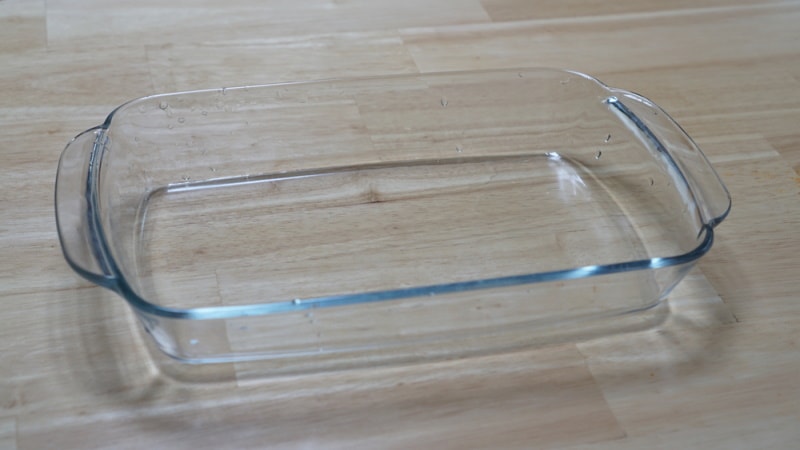
“PYREX” vs. “pyrex”
Pyrex changed formulas in the 1950s to incorporate cheaper and more eco-friendly tempered soda lime glass. If you have an older, post-1940s piece, it can be hard to tell if the glass is borosilicate or tempered glass, as the exact date that the company made the change is unknown.
In the late 20th century, the brand split. Arc International eventually took over the European brand, while Corelle, based in Pennsylvania, runs the American brand.
The two companies do not produce the same glass. If you have a “PYREX” label on your glass, it’s a French product consisting of borosilicate glass. A dish with a lowercase “pyrex” logo means it is Corelle’s tempered soda lime glass. If you view it in the light, you’ll see a bluish-green tint to the edge of a tempered glass piece, making it easily identifiable.
The borosilicate glass is a higher-quality material, and you’ll assume as much if you compare the price tags of similar “PYREX” and “pyrex” pieces. PYREX glass has a superior thermal shock resistance of up to roughly 425°F and an upper-temperature threshold above 500°F. You’ll pay more, but borosilicate is the best choice if you want the most durable glass for kitchen temperature extremes.
Why Choose Tempered Glass?
If you feel disenchanted because of the PYREX/pyrex distinction, don’t take it as a reason to pitch that “pyrex” dish. High-quality tempered glass is a substantial upgrade from easily breakable soda lime glass. It can withstand temperatures up to 470°F and is roughly three times more durable than standard non-tempered versions. And if it does shatter, tempered glass will break into harmless cubes instead of sharp shards.
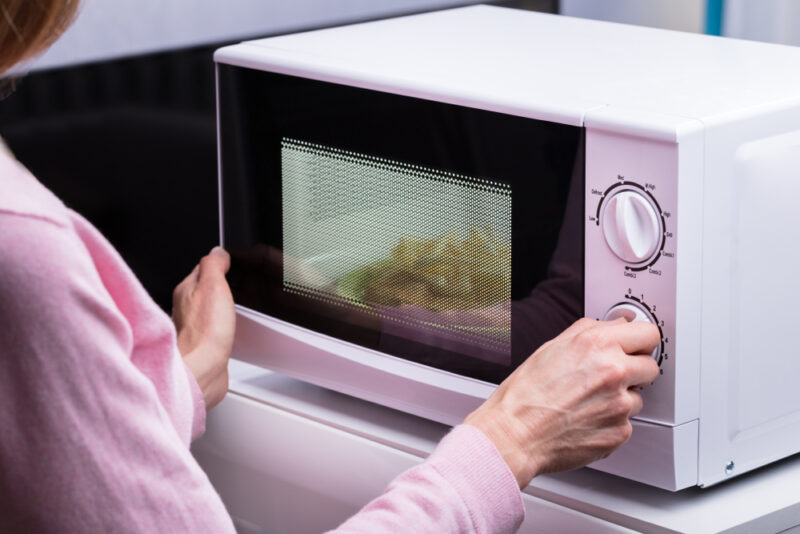
Can You Bring Pyrex from the Freezer to the Microwave?
If you want to pull your glassware from the freezer and put it straight into the microwave, you need to know the type of Pyrex you’re using. If it sports the European “PYREX” logo, you’re good to go. The borosilicate glass has a shock resistance of over 400°F, well beyond the difference between a freezer and the max temperature of a microwave.
A tempered glass “pyrex” dish means you’ll need to wait for it to come to room temperature before it’s microwave-safe. Tempered glass can only withstand sudden temperature shifts of roughly 100°F, though some tests show its thermal shock resistance can exceed 200°F. For safety, assume a lower tolerance, and follow the manufacturer’s advice.
Are Pyrex Lids Microwave-Safe?
Pyrex lids are microwave-safe, but you must use the same care for the glass lids as the dishes. Tempered glass lids must come to room temperature before you put them in the microwave. By contrast, a borosilicate PYREX lid can go straight to the microwave without breaking.
The plastic lids are a separate story, and there’s no clear winner between the two logos regarding the microwave. They both produce BPA-free lids for their dishes, and while you can’t expect them to hold up to oven temperatures, the plastic won’t have the same thermal shock issues as glass. Of course, a plastic lid won’t do much good without the Pyrex dish underneath, so its use still depends on the type of glass you’re using.
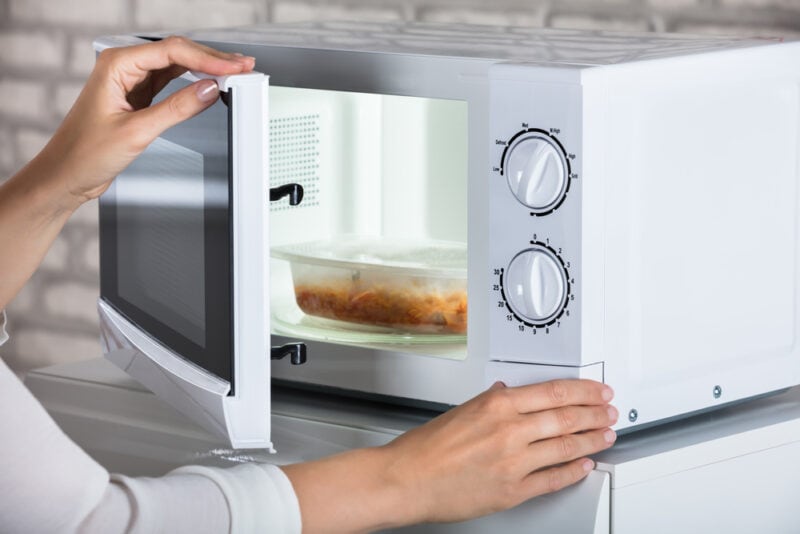
Microwave Safety Tips for Using Pyrex
Microwave safety tips vary depending on the type of Pyrex glass. Being more durable and stress-resistant, borosilicate “PYREX” requires less consideration than “pyrex” tempered glass to prevent breakage. That could be one reason “PYREX” comes with a 10-year warranty, and “pyrex” only includes a 2-year guarantee.
If you’re concerned about damage regardless of what the label says, following a few general safety tips will ensure your Pyrex emerges from the microwave unscathed:
- Allow bakeware to come to room temperature before putting it in the fridge, freezer, microwave, or pre-heated oven
- Place a cloth between stacked Pyrex dishes to prevent sticking, scratching, and chipping
- Put hot Pyrex dishes on a dry towel or cooling rack, not a wet or cool surface
- Do not microwave chipped Pyrex, as it increases the risk of breakage
- Do not use Pyrex on a cooktop or grill or in a toaster, broiler, or pre-heating oven
- Do not add liquid to a hot Pyrex dish
- Do not use Pyrex to heat popcorn or foods with browning wrappers
You may not be able to pop a “pyrex” dish in the microwave straight from the freezer, but if you’re in a hurry, you can at least bring it to room temperature quickly. Like thawing meat, you can put the dish in lukewarm water to make it microwave-ready in only a few minutes.


Conclusion
Unless you see the “PYREX” logo from the European brand, it can be challenging to determine if you have borosilicate glass, even if it is a decades-old dish. No matter the material, the lifespan of your Pyrex pieces is in your control. Follow these tips for using Pyrex in the microwave, and you’ll have no trouble keeping your favorite bakeware in the family for years.
Featured Image Credit: Africa Studio, Shutterstock
Contents
